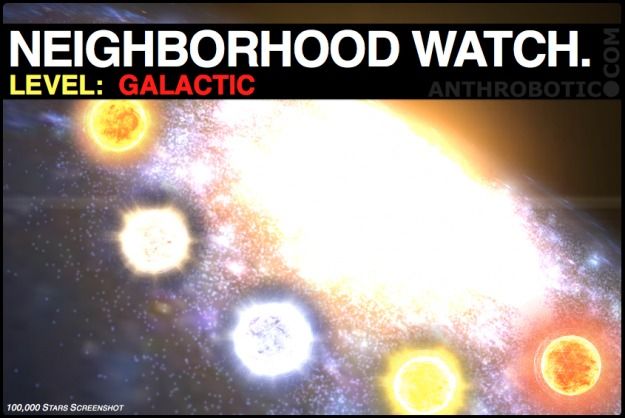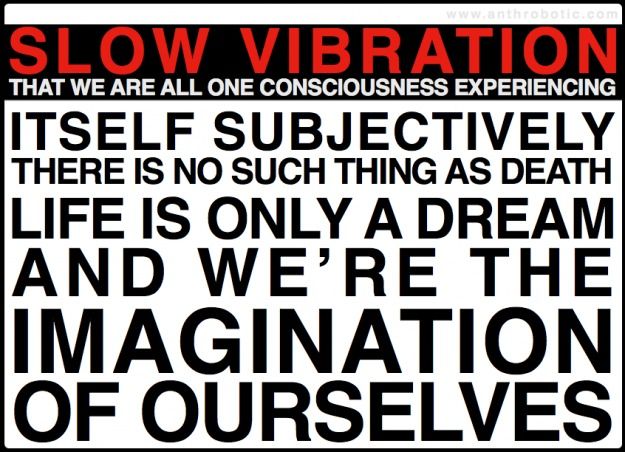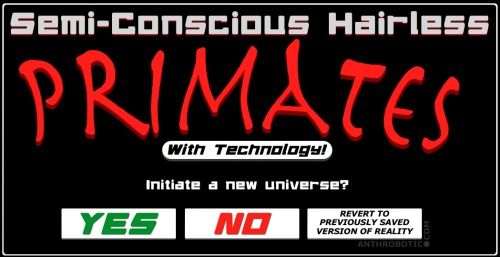A response to McClelland and Plaut’s
comments in the Phys.org story:
Do brain cells need to be connected to have meaning?
Asim Roy
Department of Information Systems
Arizona State University
Tempe, Arizona, USA
www.lifeboat.com/ex/bios.asim.roy
Article reference:
Roy A. (2012). “A theory of the brain: localist representation is used widely in the brain.” Front. Psychology 3:551. doi: 10.3389/fpsyg.2012.00551
Original article: http://www.frontiersin.org/Journal/FullText.aspx?s=196&name=cognitive_science&ART_DOI=10.3389/fpsyg.2012.00551
Comments by Plaut and McClelland: http://phys.org/news273783154.html
Note that most of the arguments of Plaut and McClelland are theoretical, whereas the localist theory I presented is very much grounded in four decades of evidence from neurophysiology. Note also that McClelland may have inadvertently subscribed to the localist representation idea with the following statement:
“Even here, the principles of distributed representation apply: the same place cell can represent very different places in different environments, for example, and two place cells that represent overlapping places in one environment can represent completely non-overlapping places in other environments.”
The notion that a place cell can “represent” one or more places in different environments is very much a localist idea. It implies that the place cell has meaning and interpretation. I start with responses to McClelland’s comments first. Please reference the Phys.org story to find these quotes from McClelland and Plaut and see the contexts.
1. McClelland – “what basis do I have for thinking that the representation I have for any concept – even a very familiar one – is associated with a single neuron, or even a set of neurons dedicated only to that concept?”
There’s four decades of research in neurophysiology on receptive field cells in the sensory processing systems and on hippocampal place cells that shows that single cells can encode a concept – from motion detection, color coding and line orientation detection to identifying a particular location in an environment. Neurophysiologists have also found category cells in the brains of humans and animals. See the next response which has more details on category cells. The neurophysiological evidence is substantial that single cells encode concepts, starting as early as the retinal ganglion cells. Hubel and Wiesel won a Nobel Prize in physiology and medicine in 1981 for breaking this “secret code” of the brain. Thus there’s enough basis to think that a single neuron can be dedicated to a concept and even at a very low level (e.g. for a dot, a line or an edge).
2. McClelland – “Is each such class represented by a localist representation in the brain?”
Cells that represent categories have been found in human and animal brains. Fried et al. (1997) found some MTL (medial temporal lobe) neurons that respond selectively to gender and facial expression and Kreiman et al. (2000) found MTL neurons that respond to pictures of particular categories of objects, such as animals, faces and houses. Recordings of single-neuron activity in the monkey visual temporal cortex led to the discovery of neurons that respond selectively to certain categories of stimuli such as faces or objects (Logothetis and Sheinberg, 1996; Tanaka, 1996; Freedman and Miller, 2008).
I quote Freedman and Miller (2008): “These studies have revealed that the activity of single neurons, particularly those in the prefrontal and posterior parietal cortices (PPCs), can encode the category membership, or meaning, of visual stimuli that the monkeys had learned to group into arbitrary categories.”
Lin et al. (2007) report finding “nest cells” in mouse hippocampus that fire selectively when the mouse observes a nest or a bed, regardless of the location or environment.
Gothard et al. (2007) found single neurons in the amygdala of monkeys that responded selectively to images of monkey faces, human faces and objects as they viewed them on a computer monitor. They found one neuron that responded in particular to threatening monkey faces. Their general observation is (p. 1674): “These examples illustrate the remarkable selectivity of some neurons in the amygdala for broad categories of stimuli.”
Thus the evidence is substantial that category cells exist in the brain.
References:
- Fried, I., McDonald, K. & Wilson, C. (1997). Single neuron activity in human hippocampus and amygdala during recognition of faces and objects. Neuron 18, 753–765.
- Kreiman, G., Koch, C. & Fried, I. (2000) Category-specific visual responses of single neurons in the human medial temporal lobe. Nat. Neurosci. 3, 946–953.
- Freedman DJ, Miller EK (2008) Neural mechanisms of visual categorization: insights from neurophysiology. Neurosci Biobehav Rev 32:311–329.
- Logothetis NK, Sheinberg DL (1996) Visual object recognition. Annu Rev Neurosci 19:577–621.
- Tanaka K (1996) Inferotemporal cortex and object vision. Annu Rev Neurosci 19:109–139.
- Lin, L. N., Chen, G. F., Kuang, H., Wang, D., & Tsien, J. Z. (2007). Neural encoding of the concept of nest in the mouse brain. Proceedings of theNational Academy of Sciences of the United States of America, 104, 6066–6071.
- Gothard, K.M., Battaglia, F.P., Erickson, C.A., Spitler, K.M. & Amaral, D.G. (2007). Neural Responses to Facial Expression and Face Identity in the Monkey Amygdala. J. Neurophysiol. 97, 1671–1683.
3. McClelland – “Do I have a localist representation for each phase of every individual that I know?”
Obviously more research is needed to answer these types of questions. But Saddam Hussein and Jennifer Aniston type cells may provide the clue someday.
4. McClelland – “Let us discuss one such neuron – the neuron that fires substantially more when an individual sees either the Eiffel Tower or the Leaning Tower of Pisa than when he sees other objects. Does this neuron ‘have meaning and interpretation independent of other neurons’? It can have meaning for an external observer, who knows the results of the experiment – but exactly what meaning should we say it has?”
On one hand, this obviously brings into focus a lot of the work in neurophysiology. This could boil down to asking who is to interpret the activity of receptive fields, place and grid cells and so on and whether such interpretation can be independent of other neurons. In neurophysiology, the interpretation of these cells (e.g. for motion detection, color coding, edge detection, place cells and so on) are obviously being verified independently in various research labs throughout the world and with repeated experiments. So it is not that some researcher is arbitrarily assigning meaning to cells and that such results can’t be replicated and verified. For many such cells, assignment of meaning is being verified by different labs.
On the other hand, this probably is a question about whether that cell is a category cell and how to assign meaning to it. The interpretation of a cell that responds to pictures of the Eiffel Tower and the Leaning Tower of Pisa, but not to other landmarks, could be somewhat similar to a place cell that responds to a certain location or it could be similar to a category cell. Similar cells have been found in the MTL region — a neuron firing to two different basketball players, a neuron firing to Luke Skywalker and Yoda, both characters of Star Wars, and another firing to a spider and a snake (but not to other animals) (Quiroga & Kreiman, 2010a). Quian Quiroga et al. (2010b, p. 298) had the following observation on these findings: “…. one could still argue that since the pictures the neurons fired to are related, they could be considered the same concept, in a high level abstract space: ‘the basketball players,’ ‘the landmarks,’ ‘the Jedi of Star Wars,’ and so on.”
If these are category cells, there is obviously the question what other objects are included in the category. But, it’s clear that the cells have meaning although it might include other items.
References:
- Quian Quiroga, R. & Kreiman, G. (2010a). Measuring sparseness in the brain: Comment on Bowers (2009). Psychological Review, 117, 1, 291–297.
- Quian Quiroga, R. & Kreiman, G. (2010b). Postscript: About Grandmother Cells and Jennifer Aniston Neurons. Psychological Review, 117, 1, 297–299.
5. McClelland – “In the context of these observations, the Cerf experiment considered by Roy may not be as impressive. A neuron can respond to one of four different things without really having a meaning and interpretation equivalent to any one of these items.”
The Cerf experiment is not impressive? What McClelland is really questioning is the existence of highly selective cells in the brains of humans and animals and the meaning and interpretation associated with those cells. This obviously has a broader implication and raises questions about a whole range of neurophysiological studies and their findings. For example, are the “nest cells” of Lin et al. (2007) really category cells sending signals to the mouse brain that there is a nest nearby? Or should one really believe that Freedman and Miller (2008) found category cells in the monkey visual temporal cortex that identify certain categories of stimuli such as faces or objects? Or should one believe that Gothard et al. (2007) found category cells in the amygdala of monkeys that responded selectively to images of monkey faces, human faces and objects as they viewed them on a computer monitor? And how about that one neuron that Gothard et al. (2007) found that responded in particular to threatening monkey faces? And does this question about the meaning and interpretation of highly selective cells also apply to simple and complex receptive fields in the retina ganglion and the primary visual cortex? Note that a Nobel Prize has already been awarded for the discovery of these highly selective cells.
The evidence for the existence of highly selective cells in the brains of humans and animals is substantive and irrefutable although one can theoretically ask “what else does it respond to?” Note that McClelland’s question contradicts his own view that there could exist place cells, which are highly selective cells.
6. McClelland – “While we sometimes (Kumeran & McClelland, 2012 as in McClelland & Rumelhart, 1981) use localist units in our simulation models, it is not the neurons, but their interconnections with other neurons, that gives them meaning and interpretation….Again we come back to the patterns of interconnections as the seat of knowledge, the basis on which one or more neurons in the brain can have meaning and interpretation.”
“one or more neurons in the brain can have meaning and interpretation” – that sounds like localist representation, but obviously that’s not what is meant. Anyway, there’s no denying that there is knowledge embedded in the connections between the neurons, but that knowledge is integrated by the neurons to create additional knowledge. So the neurons have additional knowledge that does not exist in the connections. And single cell studies are focused on discovering the integrated knowledge that exists only in the neurons themselves. For example, the receptive field cells in the sensory processing systems and the hippocampal place cells show that some cells detect direction of motion, some code for color, some detect orientation of a line and some detect a particular location in an environment. And there are cells that code for certain categories of objects. That kind of knowledge is not easily available in the connections. In general, consolidated knowledge exists within the cells and that’s where the general focus has been of single cell studies.
7. Plaut – “Asim’s main argument is that what makes a neural representation localist is that the activation of a single neuron has meaning and interpretation on a stand-alone basis. This is about how scientists interpret neural activity. It differs from the standard argument on neural representation, which is about how the system actually works, not whether we as scientists can make sense of a single neuron. These are two separate questions.”
Doesn’t “how the system actually works” depend on our making “sense of a single neuron?” The representation theory has always been centered around single neurons, whether they have meaning on a stand-alone basis or not. So how does making “sense of a single neuron” become a separate question now? And how are these two separate questions addressed in the literature?
8. Plaut – “My problem is that his claim is a bit vacuous because he’s never very clear about what a coherent ‘meaning and interpretation’ has to be like…. but never lays out the constraints that this is meaning and interpretation, and this isn’t. Since we haven’t figured it out yet, what constitutes evidence against the claim? There’s no way to prove him wrong.”
In the article, I used the standard definition from cognitive science for localist units, which is a simple one, that localist units have meaning and interpretation. There is no need to invent a new definition for localist representation. The standard definition is very acceptable, accepted by the cognitive science community and I draw attention to that in the article with verbatim quotes from Plate, Thorpe and Elman. Here they are again.
- Plate (2002):“Another equivalent property is that in a distributed representation one cannot interpret the meaning of activity on a single neuron in isolation: the meaning of activity on any particular neuron is dependent on the activity in other neurons (Thorpe 1995).”
- Thorpe (1995, p. 550): “With a local representation, activity in individual units can be interpreted directly … with distributed coding individual units cannot be interpreted without knowing the state of other units in the network.”
- Elman (1995, p. 210): “These representations are distributed, which typically has the consequence that interpretable information cannot be obtained by examining activity of single hidden units.”
The terms “meaning” and “interpretation” are not bounded in any way other than that by means of the alternative representation scheme where “meaning” of a unit is dependent on other units. That’s how it’s constrained in the standard definition and that’s been there for a long time.
Neither Plaut nor McClelland have questioned the fact that receptive fields in the sensory processing systems have meaning and interpretation. Hubel and Wiesel won the Nobel Prize in physiology and medicine in 1981 for breaking this “secret code” of the brain. Here’s part of the Nobel Prize citation:
“Thus, they have been able to show how the various components of the retinal image are read out and interpreted by the cortical cells in respect to contrast, linear patterns and movement of the picture over the retina. The cells are arranged in columns, and the analysis takes place in a strictly ordered sequence from one nerve cell to another and every nerve cell is responsible for one particular detail in the picture pattern.”
Neither Plaut nor McClelland have questioned the fact that place cells have meaning and interpretation. McClelland, in fact, accepts the fact that place cells indicate locations in an environment, which means that he accepts that they have meaning and interpretation.
9. Plaut – “If you look at the hippocampal cells (the Jennifer Aniston neuron), the problem is that it’s been demonstrated that the very same cell can respond to something else that’s pretty different. For example, the same Jennifer Aniston cell responds to Lisa Kudrow, another actress on the TV show Friends with Aniston. Are we to believe that Lisa Kudrow and Jennifer Aniston are the same concept? Is this neuron a Friends TV show cell?”
Want to clarify three things here. First, localist cells are not necessarily grandmother cells. Grandmother cells are a special case of localist cells and this has been made clear in the article. For example, in the primary visual cortex, there are simple and complex cells that are tuned to visual characteristics such as orientation, color, motion and shape. They are localist cells, but not grandmother cells.
Second, the analysis in the article of the interactive activation (IA) model of McClelland and Rumelhart (1981) shows that a localist unit can respond to more than one concept in the next higher level. For example, a letter unit can respond to many word units. And the simple and complex cells in the primary visual cortex will respond to many different objects.
Third, there are indeed category cells in the brain. Response No. 2 above to McClelland’s comments cites findings in neurophysiology on category cells. So the Jennifer Aniston/Lisa Kudrow cell could very well be a category cell, much like the one that fired to spiders and snakes (but not to other animals) and the one that fired for both the Eiffel Tower and the Tower of Pisa (but not to other landmarks). But category cells have meaning and interpretation too. The Jennifer Aniston/Lisa Kudrow cell could be a Friends TV show cell, as Plaut suggested, but it still has meaning and interpretation. However, note that Koch (2011, p. 18, 19) reports finding another Jennifer Aniston MTL cell that didn’t respond to Lisa Kudrow:
“One hippocampal neuron responded only to photos of actress Jennifer Aniston but not to pictures of other blonde women or actresses; moreover, the cell fired in response to seven very different pictures of Jennifer Aniston.”
References:
- Koch, C. (2011). Being John Malkovich. Scientific American Mind, March/April, 18–19.
10. Plaut – “Only a few experiments show the degree of selectivity and interpretability that he’s talking about…. In some regions of the medial temporal lobe and hippocampus, there seem to be fairly highly selective responses, but the notion that cells respond to one concept that is interpretable doesn’t hold up to the data.”
There are place cells in the hippocampus that identify locations in an environment. Locations are concepts. And McClelland admits place cells represent locations. There is also plenty of evidence on the existence of category cells in the brain (see Response No. 2 above to McClelland’s comments) and categories are, of course, concepts. And simple and complex receptive fields also represent concepts such as direction of motion, line orientation, edges, shapes, color and so on. There is thus abundance of data in neurophysiology that shows that “cells respond to one concept that is interpretable” and that evidence is growing.
The existence of highly tuned and selective cells that have meaning and interpretation is now beyond doubt, given the volume of evidence from neurophysiology over the last four decades.



